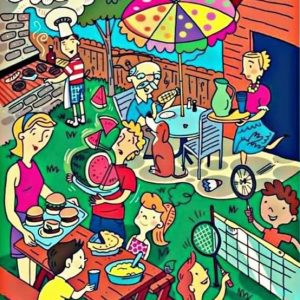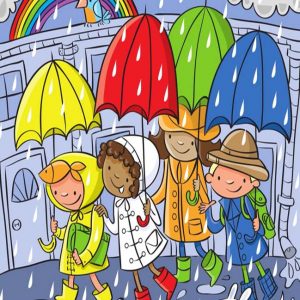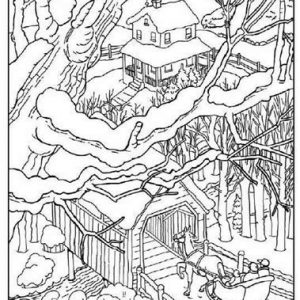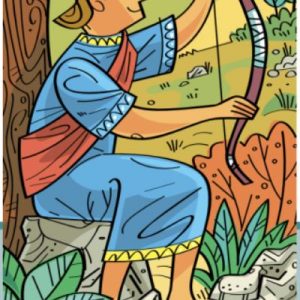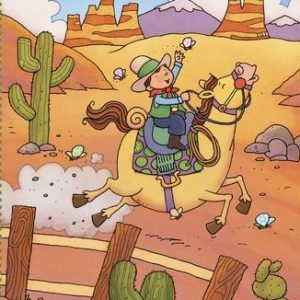Street Scene Chaos: How Visual Puzzles Like This Boost Brainpower and Observation Skills
Welcome to one of the most delightfully chaotic street scenes you’ll ever lay your eyes on. At first glance, everything seems like a normal day in the city—people walking, cars driving, someone fixing a traffic light. But then the absurdity starts to reveal itself: a manhole is wide open, a boy wears a crown, there’s a fish on a license plate, and someone’s driving with their feet. Yep, you’ve stumbled into a find-the-mistake puzzle, and this one’s packed with oddities begging to be spotted.
But here’s the thing: while your brain is having fun unraveling the madness in this image, it’s also getting a powerful workout. These visual brain teasers aren’t just about having a laugh—they build your cognitive strength, boost your memory, and improve your attention to detail. Let’s break down what makes this kind of puzzle a must-have in your daily routine.

Why Spot-the-Mistake Puzzles Are More Than Just Fun
There’s a reason we keep getting drawn into these kinds of images. They’re addictive. Not just because they’re fun, but because they reward your brain every time you catch something that doesn’t belong—like the upside-down traffic sign or the kid waving from the backseat of a car with no seatbelt on.
Your brain loves a challenge, and puzzles like this one tap into your natural instinct to solve, compare, and conquer. Every weird thing you find gives you a little burst of dopamine—the brain’s way of saying, “Nice catch!”
The Science Behind the Smiles: What These Puzzles Do to Your Brain
Believe it or not, this cartoon street scene is actually doing you a favor. Here’s how these kinds of puzzles level up your mental game:
Improves Visual Processing Speed
To spot mistakes in a cluttered, fast-paced scene like this, your brain has to scan quickly and process visual information in real time. That same skill helps you in daily life—like noticing a typo in an email or catching a misstep while driving.
Boosts Attention to Detail
You can’t just glance at this picture—you have to observe. Closely. From the soccer ball to the license plates to the produce display. And the more closely you look, the more anomalies you’ll find. This builds your ability to concentrate and analyze complex visual data, which is useful in everything from academic performance to workplace problem-solving.
Enhances Working Memory
To spot differences or errors, your brain needs to remember what something should look like, compare it to what you’re seeing now, and flag anything out of place. This constant loop strengthens your working memory—the very same mental muscle that helps you remember directions, numbers, and names.

Develops Logical and Critical Thinking
Why is there a pineapple in the vegetable section? Why is someone driving barefoot? Your brain doesn’t just notice these things—it questions them. That sparks logic, analysis, and deductive reasoning. This is puzzle-solving at its best, masked as simple street scene spotting.
For Kids: Learning Disguised as Play
If you’ve got a child at home, puzzles like this are pure gold. They help young brains grow without ever feeling like homework. Here’s what they’re getting from all the giggles and guesses:
- Sharp Eyes and Quick Thinking: Kids learn to quickly assess situations and notice inconsistencies.
- Boost in Focus: With so many distractions in the world, getting a child to sit still and look closely is a win.
- Vocabulary Building: “Why is that banana red?” leads to conversations, questions, and new words.
- Confidence Boosting: Every time they spot something weird, they get a hit of success, which encourages more learning through discovery.

Adults, You Need This Too (Seriously)
You might think this cartoon chaos is just kid stuff—but adults benefit big-time from these puzzles. In fact, these brain teasers can help you:
- Reboot Your Mind: Five minutes of focus on a fun visual challenge helps reset your attention span.
- Relax Through Laughter: Let’s be honest—the goofy errors are hilarious. Laughter is stress relief, and these images deliver.
- Stay Sharp as You Age: Visual logic puzzles help keep your brain active, alert, and healthy as you get older.
- Escape the Digital Grind: This is one of the few screen activities that doesn’t feel like digital overload.
How to Master a Scene Like This One
Ready to become a visual puzzle pro? Here are a few tips for dominating images like this one:
- Start with the Absurd: Begin with things that immediately jump out as “off”—like a man fixing a traffic light with a wrench or someone reading a book mid-run.
- Check Repetition: Are there things that show up twice when they shouldn’t—like multiple shadows or duplicate outfits?
- Zoom in on Common Sense: Ask yourself, “Would that happen in real life?” If the answer is no, it’s probably a hidden mistake.
- Use a Grid Scan: Mentally divide the image into four parts and inspect one quadrant at a time.

Create Your Own Chaos: A Fun Family Challenge
Want to take the fun offline? Try making your own “find the mistake” puzzle at home:
- Draw a basic street, park, or house scene.
- Add 5–10 silly, impossible elements (like upside-down plants or a cat walking a dog).
- Trade puzzles and see who can spot the most errors.
- Bonus: Turn it into a storytelling game by explaining what happened in this strange town!
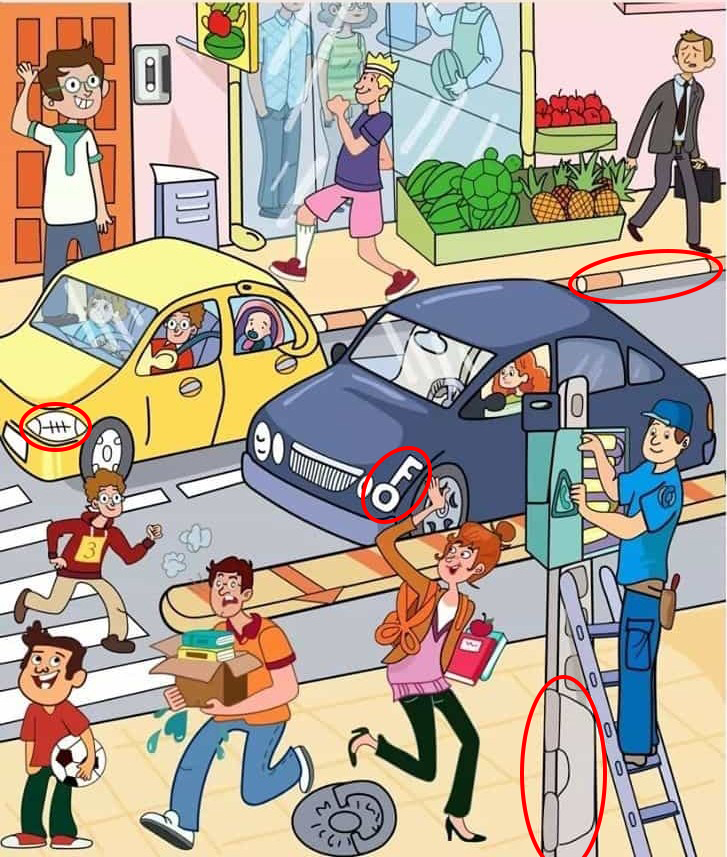
Conclusion: Chaos Is a Clue—and a Brain Boost
This street scene might look like a cartoon mess, but it’s actually a brilliant mental playground. Each oddball detail invites you to pause, focus, and engage your brain in a way that few other activities do.
So the next time you see a goofy image full of visual errors—whether it’s a flying dog, a levitating shoe, or a man holding a fish instead of a briefcase—don’t just laugh and scroll on. Take a moment. Dive in. Find the absurd. Because when you do, you’re not just spotting mistakes—you’re unlocking new levels of thinking, creativity, and observation. And that’s a superpower worth developing.
